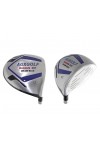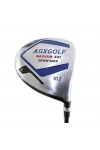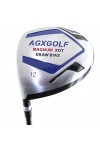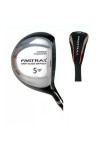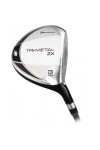Shopping Cart
0 item(s) - $0.00- AGXGOLF XS (142)
- FAQ (1)
- LADIES WEDGES (3)
- SHIPPING INFORMATION (0)
- ACCESSORIES (16)
- CLOSE OUT, DISPLAY & USED GOLF CLUBS (13)
- COMPONENTS (152)
- DRIVERS, FAIRWAY WOODS & UTILITY WOODS (244)
- GOLF BAGS and GOLF CARTS (9)
- GOLF BALLS (3)
- GOLF GLOVES (75)
- HYBRIDS (60)
- IRONS SETS & HYBRID IRONS (129)
- JUNIOR, BOYS & GIRLS GOLF CLUBS (176)
- LADIES GOLF CLUBS (338)
- WEDGES: LEFT & RIGHT HAND ALL SIZES (74)
- LEFT HANDED GOLF CLUBS (244)
- MEN'S GOLF CLUBS (345)
- NEW ARRIVALS (88)
- PRACTICE NETS (2)
- PUTTERS: LEFT & RIGHT HAND ALL SIZES (39)
- SALE (19)
- SENIOR'S GOLF CLUBS (229)
- SINGLE IRONS (38)
- TALL GOLF CLUBS for MEN (214)
- WANT 6 MONTHS TO PAY? LEARN MORE (0)
ANTI-SLICE/DRAW BIAS DRIVERS, FAIRWAY WOODS AND HYBRIDS
There are numerous backswing issues that can affect your impact. For slicing, the two basic flaws are a backswing that is going too much up, or a clockwise twisting of the shaft, or both.
If your backswsing is too much up and not enough around, then the club is going to approach the ball on an angle that is too steep. In other words, too sharply toward the ground. A properly squaring clubface would then create an impact that is hitting the ground too hard. In an effort to hit the ground a bit lighter, the golfer with this problem often opens the face on the way through, causing a slice.
To fix this issue, take a look at your backswing at the top. Make sure the shaft is over your shoulder at the top, not over your head. To achieve this position, you may have to feel your left arm cross your chest just a bit, creating a flatter or more rounded backswing. You may feel a bigger turn this way too. Good! Engaging those bigger muscles will only help you generate more power.
The next important element of the backswing will be the clubface position. One of the biggest mistakes slicers make is to turn the club clockwise to begin the backswing (i.e., immediately opening the clubface on the takeaway). This movement feels like the club is going around properly, creating a good turn. Unfortunately, this opening of the club simply creates an open face at impact. True, the clubface should "open" on the backswing, relative to the target line. However, this natural opening is done with the turning of the shoulders and torso, not because of a twist in the hands.
When you are making your backstroke, just hold on to the club. No effort to twist or hinge the wrists should be made. When you get to the top, you can check for the proper position by looking at your left wrist. You should be able to lay a ruler underneath the face of your wristwatch and have it touch both your arm and the back of your hand. In other words, the back of your left wrist should be straight.
The Downswing
You know, with a good grip and stance as well as a good backswing position, I'd be surprised if your slice is still here. If these first few areas check out, you're 90-percent of the way to eliminating that slice.
To begin the downswing make sure you start down without any lift or push forward with your arms. Your weight should shift to the front foot and your body should turn toward the target. While this is happening, you should feel a slight drop of your left arm down your torso. This will give you the feeling that you're approaching the ball by way of your right pocket. This movement will virtually guarantee that the club is coming from the right direction.
If the ball still has a tail to the right, you can add this sensation: Try to get the feeling that the club is closing a bit too soon. Feel as though the clubface is closed by the time it gets to your right leg. This should be done through softness in the wrists, with a feeling of letting the club swing. It should not be done by forcing the club to turn over with your hands. Some practice should give you the feeling.
Final Words
I have some very good news about working on this, or any other problem, for that matter. You have the best teacher in the world with you at all times - the golf ball. The way the ball flies will give you objective feedback about your swing.
You'll want to remember that you are improving if your 30-yard slice is now a 15-yard slice. No matter how strange a new move feels, always listen to what the ball tells you. You may be sure that the clubhead is turning over soon enough, but if the ball is still tailing to the right in flight, then you'll have to feel the club close sooner still.
Ex Tax: $29.95
Ex Tax: $79.95
Ex Tax: $79.95
Ex Tax: $79.95
Ex Tax: $79.95
Ex Tax: $59.95
Ex Tax: $79.95
AGXGOLF.COM (810-991-1376) © 2024

